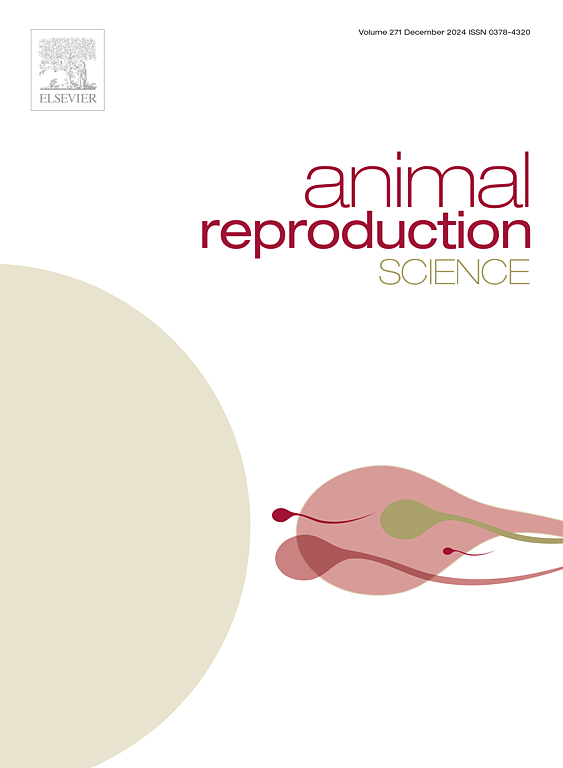Boar semen microbiome: Insights and potential implications
IF 2.2
2区 农林科学
Q1 AGRICULTURE, DAIRY & ANIMAL SCIENCE
引用次数: 0
Abstract
The pioneers of next-generation sequencing technology and bioinformatic analyses initiated a new era in microbiology research by offering profound insights into bacterial microbiome communities. In the pig farming sector, while considerable attention has been devoted to the gut microbiome and the microbiome of the female reproductive tract, research on the microbiome of boar semen remains limited. Nonetheless, published studies have provided valuable insights, serving as important references and sparking ideas for further investigations into the seminal microbiome. Factors such as breed, seasons, feed additives, hygiene management, and antibiotic use are believed to exert a notable influence on the diversity and richness of bacterial genera in the boar seminal microbiome, potentially affecting semen quality. Moreover, current shifts towards sustainability in the swine industry, coupled with global guidelines concerning the prudent use of antibiotics in stored boar semen for artificial insemination, underscore the need for insights into factors influencing seminal bacteria. The objective of this review is to elucidate the current understanding of boar bacterial contents using conventional culture methods, as well as the boar seminal microbiome through metagenomics and bioinformatics. It also aims to review specific microbiome communities, such as those in the reproductive tract and gut, and their connections to semen quality. In addition, strategic enhancements for processing boar semen doses through alternative methods to improve seminal quality are proposed.
公猪精液微生物组:见解和潜在影响。
下一代测序技术和生物信息学分析的先驱们开创了微生物学研究的新纪元,为细菌微生物群落提供了深刻的见解。在养猪业,人们对肠道微生物群和雌性生殖道微生物群给予了极大关注,但对公猪精液微生物群的研究仍然有限。不过,已发表的研究提供了有价值的见解,可作为重要的参考资料,并为进一步研究精液微生物组提供了思路。品种、季节、饲料添加剂、卫生管理和抗生素使用等因素被认为会对公猪精液微生物群中细菌属的多样性和丰富度产生显著影响,从而可能影响精液质量。此外,目前养猪业正朝着可持续发展的方向转变,加上有关在用于人工授精的贮存公猪精液中谨慎使用抗生素的全球指导原则,都强调了深入研究精液细菌影响因素的必要性。本综述旨在阐明目前使用传统培养方法对公猪细菌含量的了解,以及通过元基因组学和生物信息学对公猪精液微生物组的了解。该综述还旨在回顾特定的微生物群落,如生殖道和肠道中的微生物群落,以及它们与精液质量的关系。此外,还提出了通过替代方法处理公猪精液剂量的战略改进措施,以提高精液质量。
本文章由计算机程序翻译,如有差异,请以英文原文为准。
求助全文
约1分钟内获得全文
求助全文
来源期刊

Animal Reproduction Science
农林科学-奶制品与动物科学
CiteScore
4.50
自引率
9.10%
发文量
136
审稿时长
54 days
期刊介绍:
Animal Reproduction Science publishes results from studies relating to reproduction and fertility in animals. This includes both fundamental research and applied studies, including management practices that increase our understanding of the biology and manipulation of reproduction. Manuscripts should go into depth in the mechanisms involved in the research reported, rather than a give a mere description of findings. The focus is on animals that are useful to humans including food- and fibre-producing; companion/recreational; captive; and endangered species including zoo animals, but excluding laboratory animals unless the results of the study provide new information that impacts the basic understanding of the biology or manipulation of reproduction.
The journal''s scope includes the study of reproductive physiology and endocrinology, reproductive cycles, natural and artificial control of reproduction, preservation and use of gametes and embryos, pregnancy and parturition, infertility and sterility, diagnostic and therapeutic techniques.
The Editorial Board of Animal Reproduction Science has decided not to publish papers in which there is an exclusive examination of the in vitro development of oocytes and embryos; however, there will be consideration of papers that include in vitro studies where the source of the oocytes and/or development of the embryos beyond the blastocyst stage is part of the experimental design.
 求助内容:
求助内容: 应助结果提醒方式:
应助结果提醒方式:


